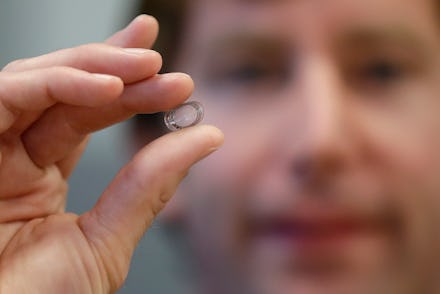Night Vision Contact Lenses May Soon Be Possible. This Is How They'll Work.

After a recent breakthrough by U.S. researchers, night-vision contact lenses could soon go from video game science-fiction to a real life possibility.
The secret? Graphene lenses which sense "the full infrared spectrum" in addition to visible and ultraviolet light. Assistant professor Zhaohui Zhong of the University of Michigan research team told the Independent: "We can make the entire design super-thin. It can be stacked on a contact lens or integrated with a cell phone."
From the Independent:
Previous attempts to use graphene in this way have suffered from the material's insensitivity towards parts of the light spectrum. The team from Michigan's breakthrough was to create a sandwich of layers, with an insulating barrier placed between two slices of graphene and an electrical current sent through the bottom part.When the infrared light hits the top layer of graphene it dislodges electrons as normal (this is, in effect, the signal that gets 'seen' by the eye) a process that is then amplified by the electrical current. And hey presto (or some other, more scientific, phrase) you get night vision."Our work pioneered a new way to detect light," said Zhong. "We envision that people will be able to adopt this same mechanism in other material and device platforms."
Traditional night-vision goggles, even the most modern models, are cumbersome and hard to use, commonly interfering with depth perception and peripheral vision. Most have multiple layers, making them thick and bulky, and require cooling systems to avoid interference from their own heat-generating electrical components. These lenses would avoid all those issues.
Zhong also suggested that other uses of the technology included medical applications — doctors could instantly look at their patients' blood flow — and art history — curators would be able to examine layers of paint below the surface of a work.